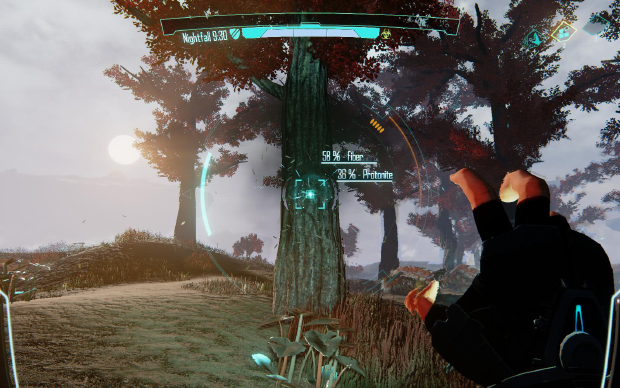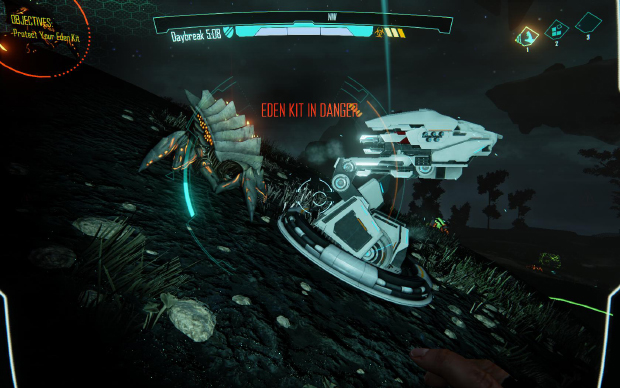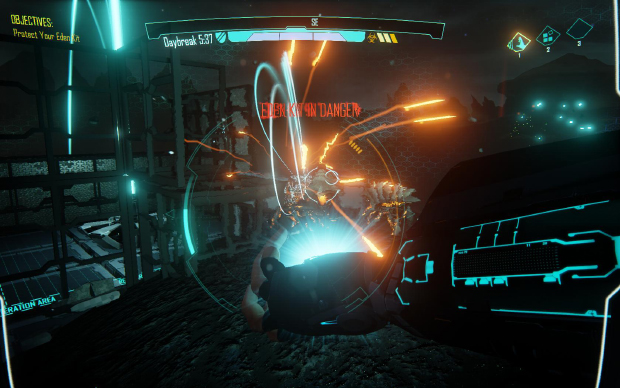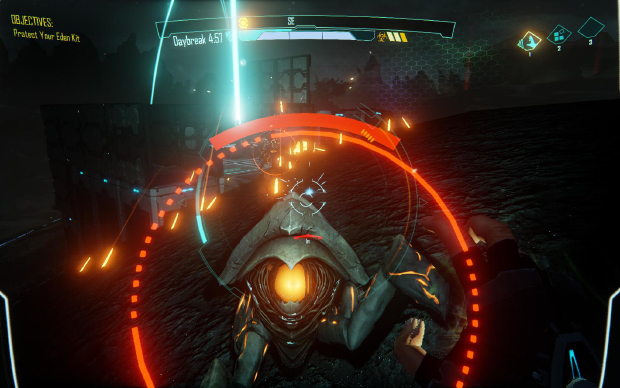Premature Evaluation: Eden Star
Hive talkin'
Each week, Marsh Davies crashlands into the hostile alien landscape that is Early Access and comes back with any stories he can find and/or an acute appreciation of how precious are the few fleeting moments of life allotted to us on this Earth and whether it really constitutes a full life, a good life, to spend the ever-diminishing number of hours and minutes clicking on virtual trees to turn them into virtual logs. Nevertheless, this week, he survives yet another survival game - this one called Eden Star, in which resource scrabbling is appended with tower-defence-style fortification on a distant planet.
I’ve carped on in previous columns about survival games, but please don’t think I hate them per se - I just suspect they offer a crutch. And I hate that crutch. I’d kick Tiny Tim over just to snap that crutch in two. That’s how much I hate that crutch. It’s this: because they are built with the singular intention to eventually kill the player, survival games often give up any aspiration to design beyond or around that event. It’s just too easy a trajectory to resist, negating the requirement for balance or mechanical evolution: all you need is a number that eventually reaches zero and you can ship. Eden Star promises to be at least a little different, because as each night falls on this harsh alien world, bugs burrow out the earth to swarm towards your hand-built base. They’ll attack you if you’re in the way, but what they’re really incensed by is the presence of your Eden device - your power source and respawn point. Thus you have a pseudo-tower-defence game in which you hurriedly chunk trees and rocks via a handheld matter reclamation device, turning them into the raw materials needed for elaborate defensive structures.
I say “pseudo-tower-defence” because, at least at this early pre-alpha stage of the game, it’s not so much a matter of assiduous tactical fortification as it is a gruelling chitinid bun-fight. Enemies seem to come from everywhere, regardless of whether you’ve destroyed their hives, and often inexplicably bypass your defences and vision as they flit towards the base. I’m not sure if they burrow, move at superspeed, or simply teleport - but the result is chaotic, incoherent flailing, rather than the sort of measured defensive engagement that validates your efforts in architecture or planning. The structure of your base or where you build it seems to have little impact: I’ve experimented building against cliff faces, or on outcrops flanked by impassable chasms, and the blighters still get past, somehow.
The game is certainly handsome, a side-effect of which is that videos make it look a good deal cooler than it actually is to fight these bugs: your fancy handheld matter reclamation gizmo doubles as kinetic weapon, blasting enemies back with a shockwave, or allowing you to pick them up and sling them repeatedly into hard surfaces. But this latter is articulated through a number of pre-cooked animations: you decide the vague direction, but exactly what you slap your victim into is decided by the game. Often it makes poor decisions, tossing enemies right into your own defensive structures. If an enemy gets inside your base, it’s frequently impossible to extract it without knocking down walls in the process. A favourite of the game is to hurl bugs into trees - which does admittedly look awesome, toppling the trunk amid a cloud of red sparks - but has the result of obscuring vision and sometimes smashing through your base itself. A battlefield swarming with seemingly teleporting enemies, covered in thick camera-high coverage of fallen foliage, at night, is not the recipe for a coherent combat scenario.
You can build turret guns to help you out, but only two per Eden device, and they aren’t nearly up to the task of defence by themselves, often spending their time shooting directly into the ground. By the third night, they have no hope of stemming the tide of foes - which lasts for a frankly tedious 7 minutes 23 seconds. I can’t say I found daytime a lot more fun, though no doubt this is contingent on rebalancing. The resource cost of any useful defence is currently so high that there is no possibility of downtime to explore either the environment or the game’s own mechanics. And, as is apparently now de rigueur in survival games, the resource requirements for any recipe are unknowable and arbitrary, forcing much menu-flipping and double-checking. Even with a clear idea of what you need in your head, to gather enough resources to build a second Eden device, power-up four turret guns and survive the third night, you’ll have to have your nose to the grindstone (or matter reclamation device to the Bridgmanite outcrop) from the off.
The process of matter reclamation is one of holding down the mouse button on an object until it falls apart. My feeling is that survival games really, really need to come up with some other way of delaying gratification during resource collection that is perhaps not just a mindless expenditure of time. The game mixes things up a little when it comes to obtaining Teslinium, the critical ingredient for a new Eden device or turret: you’ll need to take that from a hive. Finding them is almost interesting: at night, beams of glowering red shoot from the hives into the sky, but, in daytime, they are slightly harder to locate. Arbitrarily, you can’t use your matter reclamation device on them immediately, you have to destroy the hive’s casing first, which you can do by shooting it a very large number times - preferably from range, otherwise bugs come out and swamp you. Clip after clip after clip, fired into a stationary target - let's assume this is placeholder for some future, more exhilarating interaction.
There is some intriguing stuff higher up in the build menus - you can upgrade your suit and equip different powers, for instance - but the process of getting to that point is an exhausting and numbing scrabble for resources, interspersed by frantic, impotent flailing in the dark. Or I presume it would be if I could survive the fourth night. The devs state quite clearly that no balancing has yet been done on the game, but I’m not sure that’s the only problem here. Certainly, it would be a lot better if you could actually spend a few minutes to experience the world you’re in, rather than frantically frazzling rocks and trees with every spare second. But the real issue is that, beneath the glossy Unreal Engine veneer and snazzy canned animations, this is a currently a bare foundation awaiting mechanical assembly, awaiting the game to be built on top.
Sometimes you can identify the individual cogs of a mechanism, but they don’t often seem to interlock: your Eden kit, for example, projects a bubble that replenishes your shield, but when the base is under such close continual assault you’ll rarely want to stray outside it anyway. It feels like the actual actions you can take aren’t yet hooked up to any potent, tangible response from the gameworld itself: if you can’t trust sentry guns to guard your base, if you can’t eliminate hives as threats, if you can’t limit attacks by strategic placement of your structures, if you can’t physically hold off an attack, if enemies get past you no matter what, if you can’t see what you’re fighting… then your agency has little meaning.
If I sound down about Eden Star here, it’s not at all because I think it could never be a good game. Clearly the developers have gathered many of the components: I don’t doubt that the modular base-building alone is a substantial bit of work - and it functions very neatly. The art offers a considered, arresting contrast between the sterile futurism of your technology, and the dusty, ruddy world around of you, with its menacing crags of rock. Looking out across a canyon at night and seeing dozens of red beams puncturing the murk is wonderfully ominous. And the animation system, even if it steals player control, does make for impressively vicious-looking fisticuffs. All of this shows a lot of talent and effort: but it does not make a good game by itself.
As a potential investor in the game's eventual quality, what I’d ideally like to see in an Early Access build is a core loop of game design that can be parleyed into something greater. Right now this is a game in which your efforts as a player amount to placing a whole lot of walls and getting eaten by beetles, and even these two events don’t feel as profoundly interrelated as they should. Right now I suspect a crutch, and I’m pretty sure the game could walk better without it.
Eden Star is available from Steam for £15, and I played version 0.0.2.9830 on 20/02/2015.





